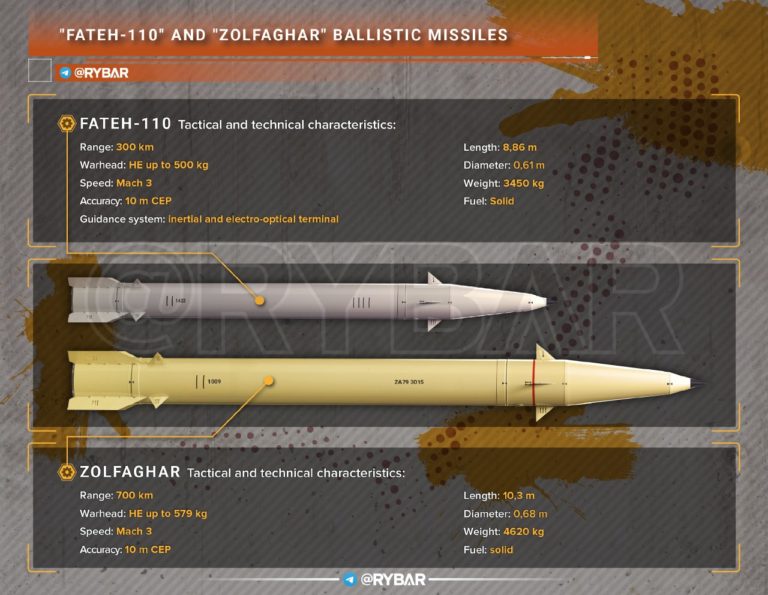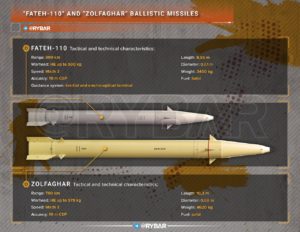

Colleagues from the War Whistleblower channel @milinfolive have pointed out an article by the US news agency CNN, the authors of which write about a shipment of Iranian strike UAVs and ballistic missiles to Russia.
If the purchase of drones is not surprising, in the second case the question may arise: why does the Russian Armed Forces need missiles from the Islamic Republic at all?
What exactly can Iran provide?
According to public sources, Tehran was considering supplying two types of systems – Fateh-110 and Zolfaghar.
▪️ The Fateh-110 is an operational tactical missile system on a three-axle vehicle chassis. A launcher without a container is mounted on the body of the vehicle.
The MLRS uses solid-propellant ballistic missiles, which are equipped with controls and guidance systems based on inertial and satellite navigation. The latest versions also have infrared homing heads (IR).
The Zolfaghar is an improved version of the Fateh-110, with a 1.5-meter longer hull, improved solid propellant engine and lighter hull made of carbon fiber.
The launcher is mounted on a dual-guided vehicle. The missile’s warhead is fitted with an infra-red seeker, which improves guidance accuracy. It is activated in the last leg of the flight and improves targeting accuracy.
🔻 So why does the Russian Armed Forces need Iranian missiles?
▪️ The Fateh-110 is a cheaper counterpart to the Russian Iskander SAM. It is inferior in range and types of munitions used, but is superior to Iskander in terms of cheapness and weight of the warhead.
The Fateh family also has a modification, Ormuz, with an anti-radar surface-to-air missile system for countering radars and SAMs, which is quite relevant in the context of the unsuppressed Ukrainian air defenses.
▪️ The Zolfaghar missiles are capable of destroying targets at ranges of up to 700 km. This makes it possible to hit targets at long distances with high accuracy and destructive power thanks to its powerful warhead.
🩸 In terms of increased operational and combat capabilities, the Iranian missiles will expand the range of weapons in addition to the more expensive Russian Iskander.
This will also make it possible to replenish Russian tactical weaponry and continue massive strikes against targets in AFU-controlled territory.
The GPS-guided precision-guided complexes could make a significant contribution to the military operation, which the US Himars have essentially done previously. The cheaper rockets from the MLRS did more damage than the expensive Iskanders.
High mobility and manoeuvrability, combined with a conventional wheelbase, will allow for the quickest and most effective strike at the target coordinates and escape from the launch area, avoiding detection.